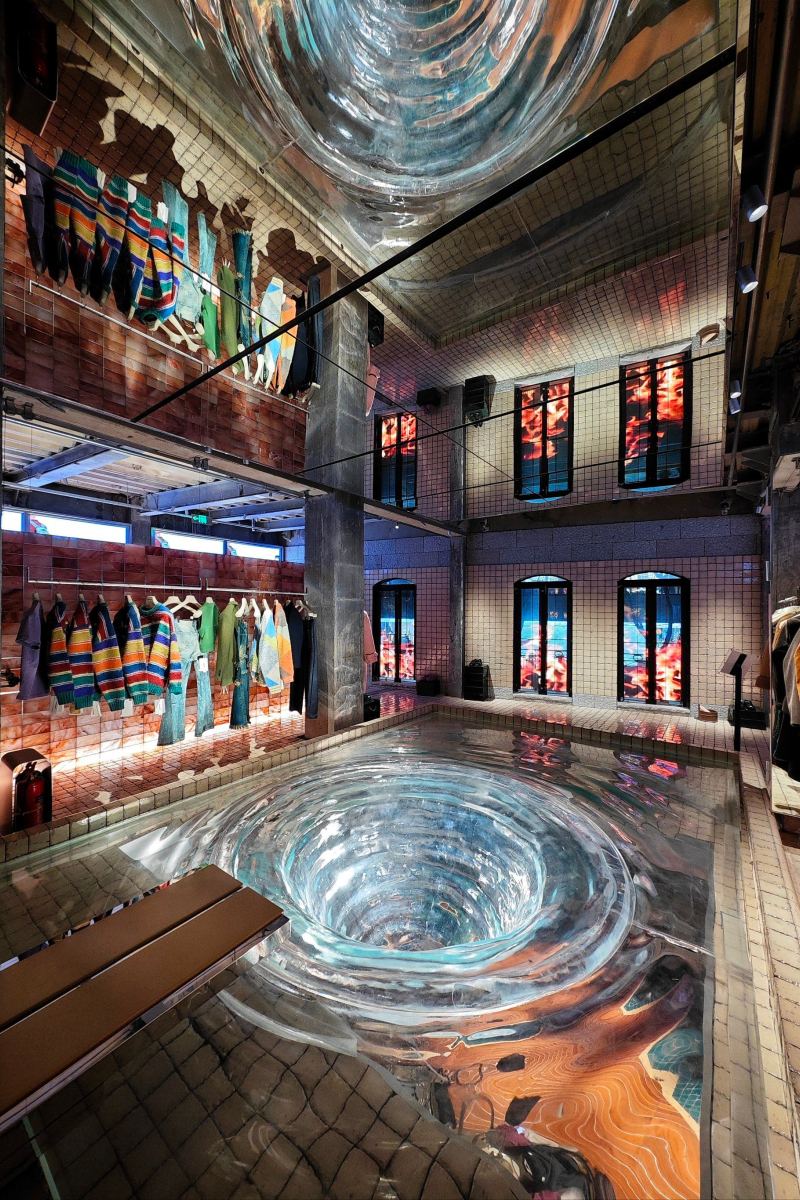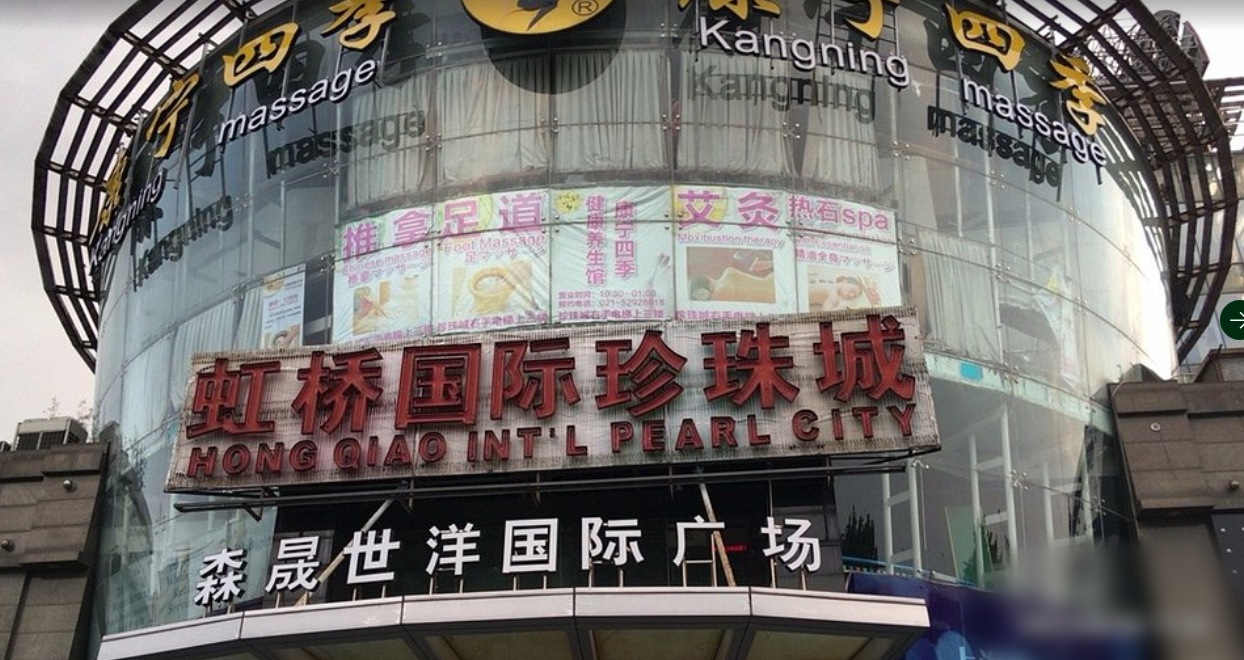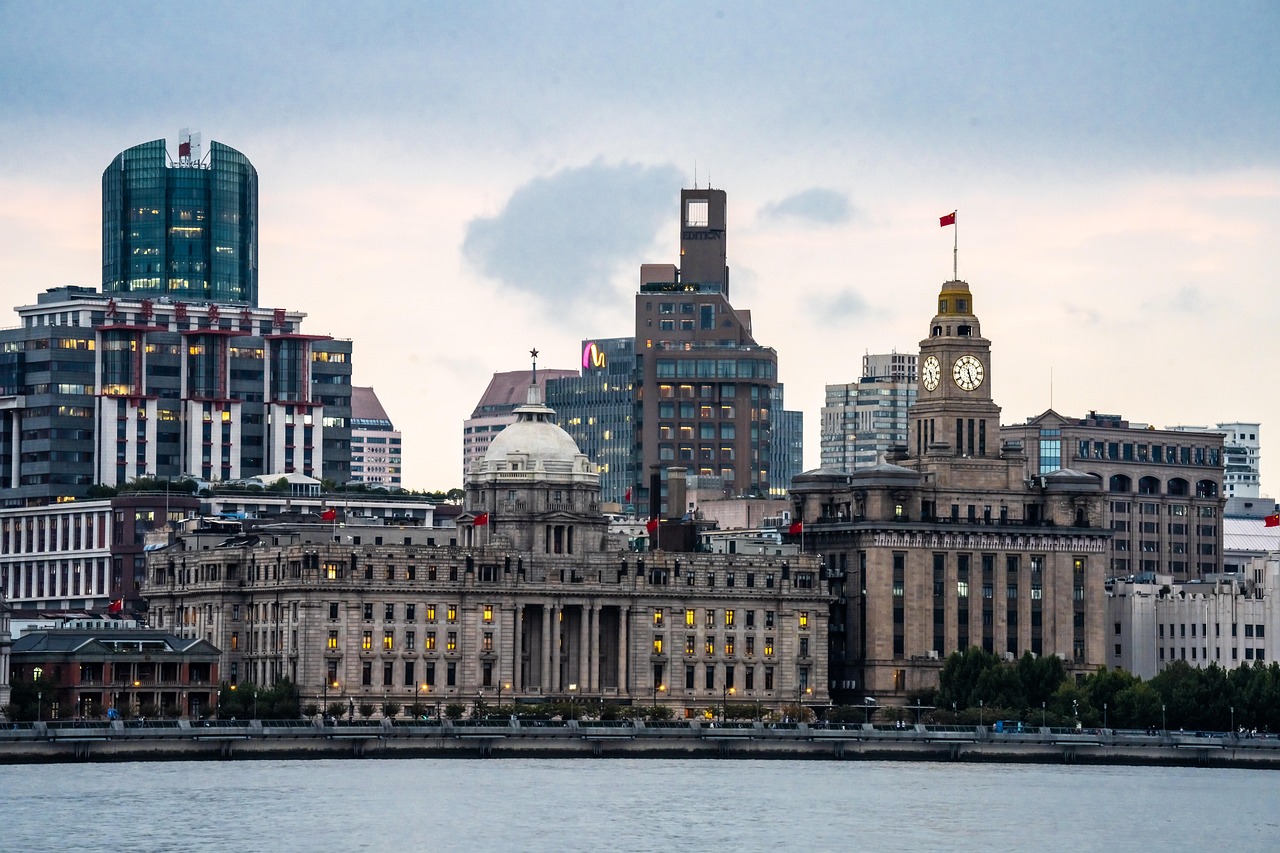
Shanghai
The first time I landed in Shanghai, the last thing on my mind was where to take photos. My mind was clogged with dumplings, LED lights and the burning question of whether the subway app would function without a Chinese SIM card. But a few hours later, I saw everyone around me taking out phones and photographing the skyline. It was an aha moment for me: that in this city, every street corner is a stage, and the camera simply another part of the street noise. Walking down the Bund at night, I recall the scent of mixed fried chestnuts and that far-off drone of tourist boats swaying by. “Lookie there!” a French-speaker behind me murmured, jabbing toward the neon-lit Oriental Pearl Tower as a local couple swept in to smash themselves into a selfie stick shot right next to them.
It was chaotic and yet weirdly choreographed, as if Shanghai had trained us all to stop for a moment and frame. And that’s why we keep hearing about the best Shanghai photo spots. And it’s not just about skyscrapers or temples — it’s about knowing where the light hits the glass, and when that crowd clears enough for a split second, or which side street has the mural nobody ever talks about. Miss it and the city scrolls on without you. Honestly, you do not want to miss the right angle here.
Why Shanghai Is a Paradise for Photographers
East Meets West: A City of Contrasts
There are cities where the camera hardly emerges from my bag, and then there’s Shanghai. Here, you have steel-and-glass towers looming over temples with broken roof tiles, and that conflict is what makes every shot charged. One moment I was looking at Lujiazui, with the Jin Mao Tower seeming almost well-behaved alongside the Shanghai Tower. A few hours later, I was wandering around Longhua Temple, where the smell of incense mixed with the fragrance of street-side roasted corn. Try cramming all of that into one frame — it can’t be done, but what makes you keep shooting.
“East meets West” is something people always say about Shanghai, but I think it’s more like a tug-of-war. The streets of the French Concession are tree-lined with plane trees whispering Europe, but the drone of scooters and red paper signs haul you back to China. For photographers, that tension is gold. It is why so many photo guides to Shanghai speak not just of landmarks, but also alleys, laundry lines and sidewalk food sellers. You don’t need to studio; the city is messy, loud and just fine how it is.
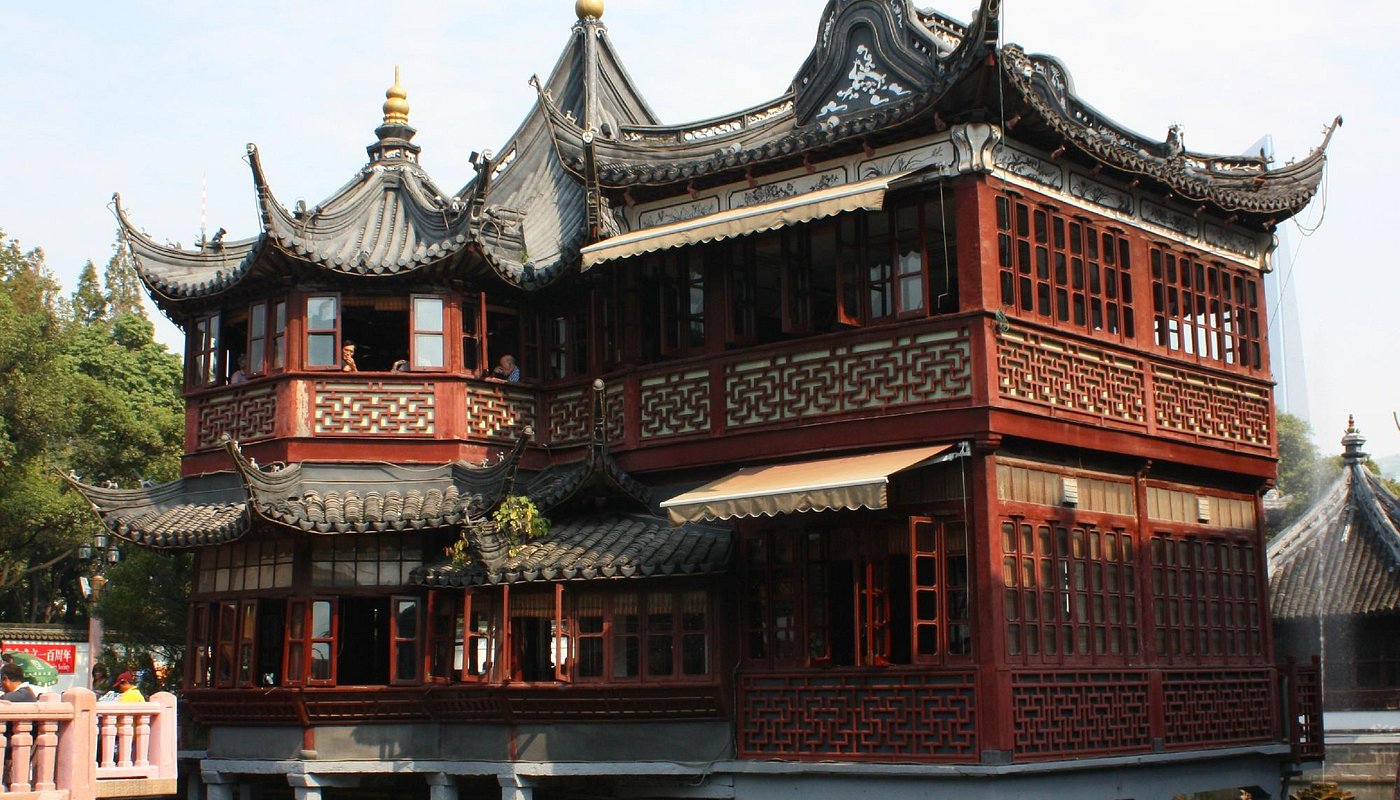
old town alleys
From Tourist Lenses to Xiaohongshu Trends
When I first scrolled through Xiaohongshu, the Shanghai-based app dubbed “China’s Instagram/Pinterest,” I couldn’t believe how many posts were tagged with “上海出片地.” It’s like the city became a living filter — every cafe wall, every metro exit might have been a backdrop. Tourists make a beeline for the Bund, but locals are at work chasing murals in Jing’an or neon-lit noodle shops made to look like movie sets. It’s a split screen, the glossy postcard shots on one side and the raw, grainy street portraits on the other.
What’s hilarious is that both aresets of emails are functional. I’ve witnessed travelers steadying tripods at sunrise on the Bund; simultaneously, teenagers grabbing quick phone-shots beneath an old sign with no neon lights. Both end up in feeds, both get saved under “best Shanghai photo spots. So the city does not give you material; it makes you choose the kind of story that you want to tell. And if you hesitate … the game is over, because that’s how quickly the Shanghai shuffle goes.
Classic Skyline Shanghai Photo Spots
The Bund: Timeless Riverside View
The Bund is where everyone starts the Shanghai photo hunt, for a good reason. You stand on the riverside, and you confront that marvel of contrasts: European-style buildings from the 1920s to one side, futuristic glass skyscrapers shimmering across the water. Want to see if the Bund Sightseeing Tunnel is worth the experience? Explore everything you need to know about the Shanghai Bund Sightseeing Tunnel here. I recall the scent in the air, a subtle fragrance of roasted sweet potatoes cooked over nice blazing coal from vendors lining the street, with teams of wedding photographers scrambling to erect lights and tripods under orange glow before nightfall. It’s crowded, yes, but the roominess without end is part of the texture.
The best time? Early in the morning, when joggers outnumber selfie sticks, or late at night just after the lights have flicked on. If you don’t like elbows in your frame, scoot slightly south to Shiliupu Wharf — less tourists and the same skyline. And no wonder this is almost everyone’s Shanghai instagram spots list. It’s predictable, probably, but if you don’t include the Bund your album will seem unfinished.
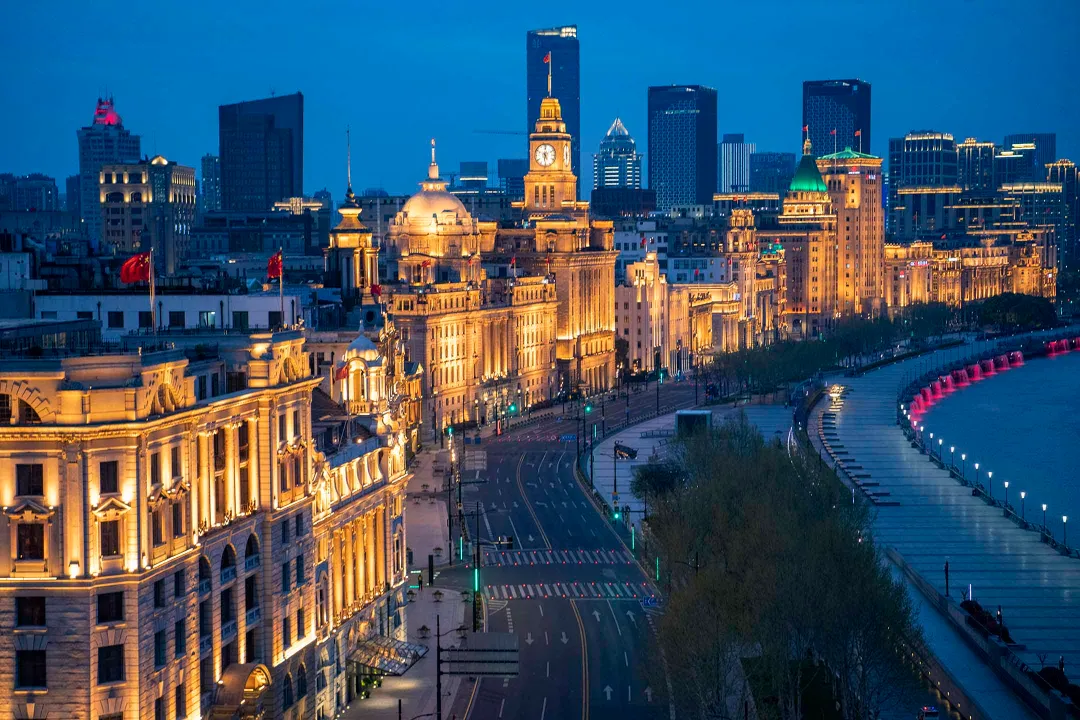
The Bund
Lujiazui Skyscrapers :Shanghai Tower & Jin Mao Tower
Cross the river by ferry or metro, and suddenly you’re under the giants. The Shanghai Tower disappears into the clouds, and Jin Mao Tower still retains its pointed, pagoda-like elegance. The glass reflects everything — sky, neon, hell, even your tiny little silhouette — which would make it one of the best photography spots in Shanghai if you’re into elevational drama. Curious to explore all the must-see skyscrapers and attractions in Lujiazui? Check out a complete guide to Lujiazui here for tips and insights.
I once stood in line to visit the observation deck at Shanghai Tower (it’ll set you back about ¥180–200 on Ctrip). The elevator rocketed upward so quickly my ears popped, and when the doors opened, the city unfolded like a board game below. The trick isn’t just shooting outward, but turning around: reflections in the glass can sometimes provide surreal double plays of the skyline. A tripod is also helpful, though it may not be looked upon fondly by security if it’s obstructing the walkway.
On the ground level, Oriental Pearl Tower’s circle is equally photogenic. Couples stop to pose with the glittering rings on the pavement, while food stalls hum nearby. If you do it just right, in blue hour, the balance of light and reflection is almost surreal — as if Shanghai put on its best face for your lens.
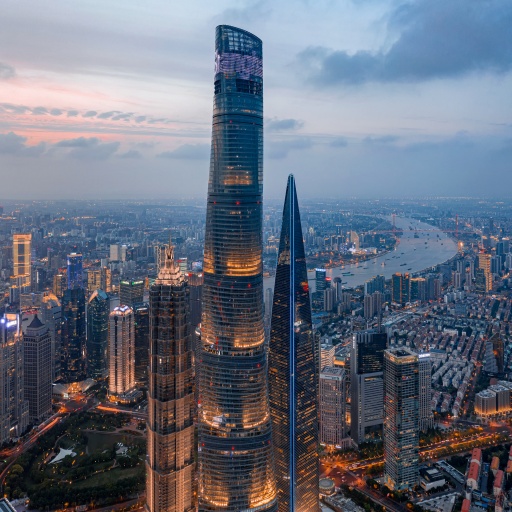
Lujiazui Skyscrapers
Huangpu River Cruise at Night
A skyline from the land is one thing, but catching it from the water tells a different story. The cruise ships on the Huangpu River—most will run you ¥120–150 depending on level—sail right between old Puxi and new Pudong. I took one in autumn and the air was crisp with diesel from nearby barges, and the entire Bund floated past like a movie strip.
Photographers grumble about unsteady decks, but a little blur can sometimes lend the lights more life. On my journey, children screamed on the top deck and a band of German tourists clinked beer bottles below. The din didn’t bother anyone because outside, the city shimmered as if it were in competition with itself.
These shots are often tagged under Shanghai photo spots, and with good reason. The river provides you with angles that are unavailable either in the Bund or Lujiazui — bridges overhead, ferries etching light streaks into water and the perpetual reminder that Shanghai is a city designed to be watched from all sides. Even if you have only one night, this cruise could be that single frame worth saving.
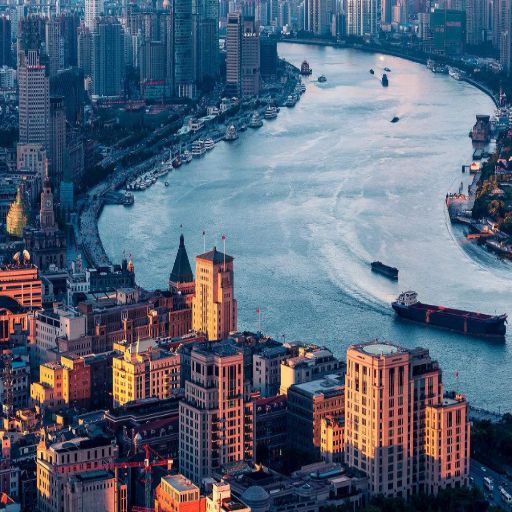
Huangpu RIver
Historic & Cultural Shanghai Photo Spots
French Concession: Tree-lined Streets & Hidden Villas
The (French) Concession Shanghai is where time moves a tick slower. Colonial-style villas are shaded by the shadow of plane trees and cafés spill jazz music into the streets. One morning, I rented a bike and breezed down Anfu Road as locals lined up for coffee beneath ivy on balconies. It was so strangely European, and then you’d see a dumpling shop nestled among the boutiques, which could slap you back into China.
This hood is more about textures than it is a single landmark. Peeling signs, wrought-iron gates, scooters propped up against old walls — around every corner is a potential frame. Some travelers bitch that it’s too curated — but to a photographer, that curated brew is gold. Use a wide-angle lens to capture the streets and pack your 50mm to make intimate street portraits. For those in search of real, but stylish Shanghai photo spots, the French Concession always has something to offer.
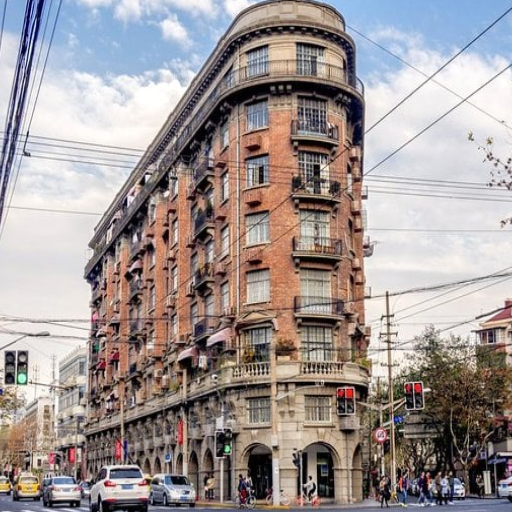
French Concession
Yu Garden and the Old Town Alleys
Yu Garden might seem to be a cliche, yet curved bridges, koi ponds, and Ming-style pavilions can never fall short in photography. I have been so wandering in one gray afternoon as it happened upon a drizzly afternoon, the red walls were softened by the gray sky, and the lanterns bounced up in the wet stone floors. The entrance fees are approximately ¥40–45 (check Trip.com to confirm), and it is filled with tour groups. All you need to do is go out to the alleys afterward.
The backstreets are on the rough side: noodle shops with steam hanging over the door, laundry dripping over your head, and vendors shouting prices in Shanghainese. This is where the Shanghai street photography comes into life. I recall the snap when a man was repairing his bicycle beside a Tanghlu stand, the clash between old and new life being more noticeable than any garden scene. It is not refined, and that is precisely the reason why it is effective.
Tianzifang: Shikumen Meets Street Art
Tianzifang can seem a bit touristy, but the further you walk into the Shikumen lanes, it becomes a maze of brick archways, art studios and hanging laundry. Dodging the weekend crush once, I ducked into a little alleyway and found a wall plastered with hand-painted posters. A student with a film camera was already there, remarking that this was his favorite “secret angle.”
Conditions are tricky — the light is dappled and narrow alleys throw shadow that taxes exposure, but that’s part of the fun. Boutique cafes situated in old homes are ideal respites when your camera’s battery starts to die. And unlike Yu Garden, Tianzifang blends history with modern creative energy, serving up shots that are gritty and still plenty colorful. It’s not exactly tranquil, but if diverse Shanghai photo spots are your quarry, this is where heritage meets urban art.

Tianzifang
Offbeat & Hidden Shanghai Photo Spots
M50 Art District Murals & Graffiti
M50 somehow finds its way into the list when discussing places of hidden photographies in Shanghai. It is a old textile factory transformed into an art zone, and it is lying serenely on Suzhou Creek. The initial visit, I lost myself in a murals courtyard, some of which are shiny and some nearly dilapidated, the city was uncertain whether to clean them or keep remnants.
It is favorite with photographers as the walls are vary. It can be one month a big anime face and next month can be abstract brushstrokes. This is the reason why M50 is one of the most instagrammable places in Shanghai among creators. I once witnessed a wedding couple who was standing in front of a graffiti dragon and their photographer screaming at the scooters going past the gate. In the case of street photography Shanghai, there is still a thin border between edited art and everyday factory work.
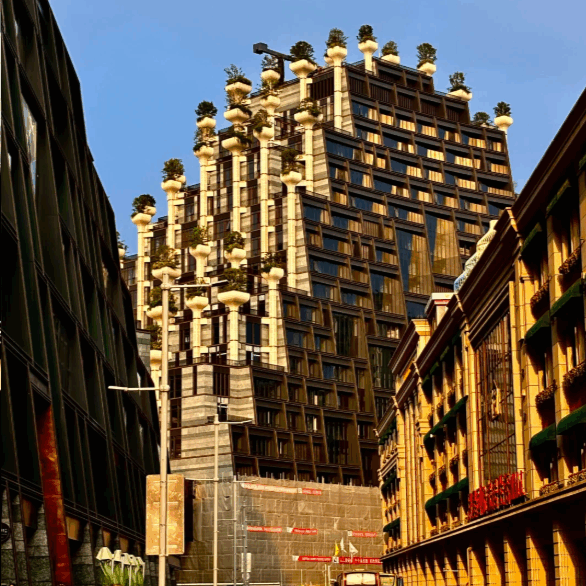
M50 Art District
1933 Old Millfun: Industrial Maze of Shadows
You will feel swallowed into concrete once you step inside 1933 Old Millfun. Its spiraling staircases and hollow corridors, originally constructed as a slaughterhouse in the 1930s, now draw photographers hungry for cinematic photos. It was a humid summer day when I went, and the air smelled slightly of damp stone overlaid by café espresso from around the corner.
It’s difficult to shoot here: the light knifes through narrow windows, casting harsh shadow lines. But that’s the very charm — one turn evokes a noir movie, the next feels like a video game set. Some call it one of the ultimate hidden Shanghai photo spots, because tourists generally don’t hang around. Entrance is free, but some exhibitions on the inside may charge about ¥ 30-50.
Bring a fast lens and patience. It had me waiting 20 minutes for a single frame: a child running down that spiral ramp while his dad screamed “Hurry up!” in echoing Chinese. In that one moment, the tension between cold architecture and human warmth held firm.
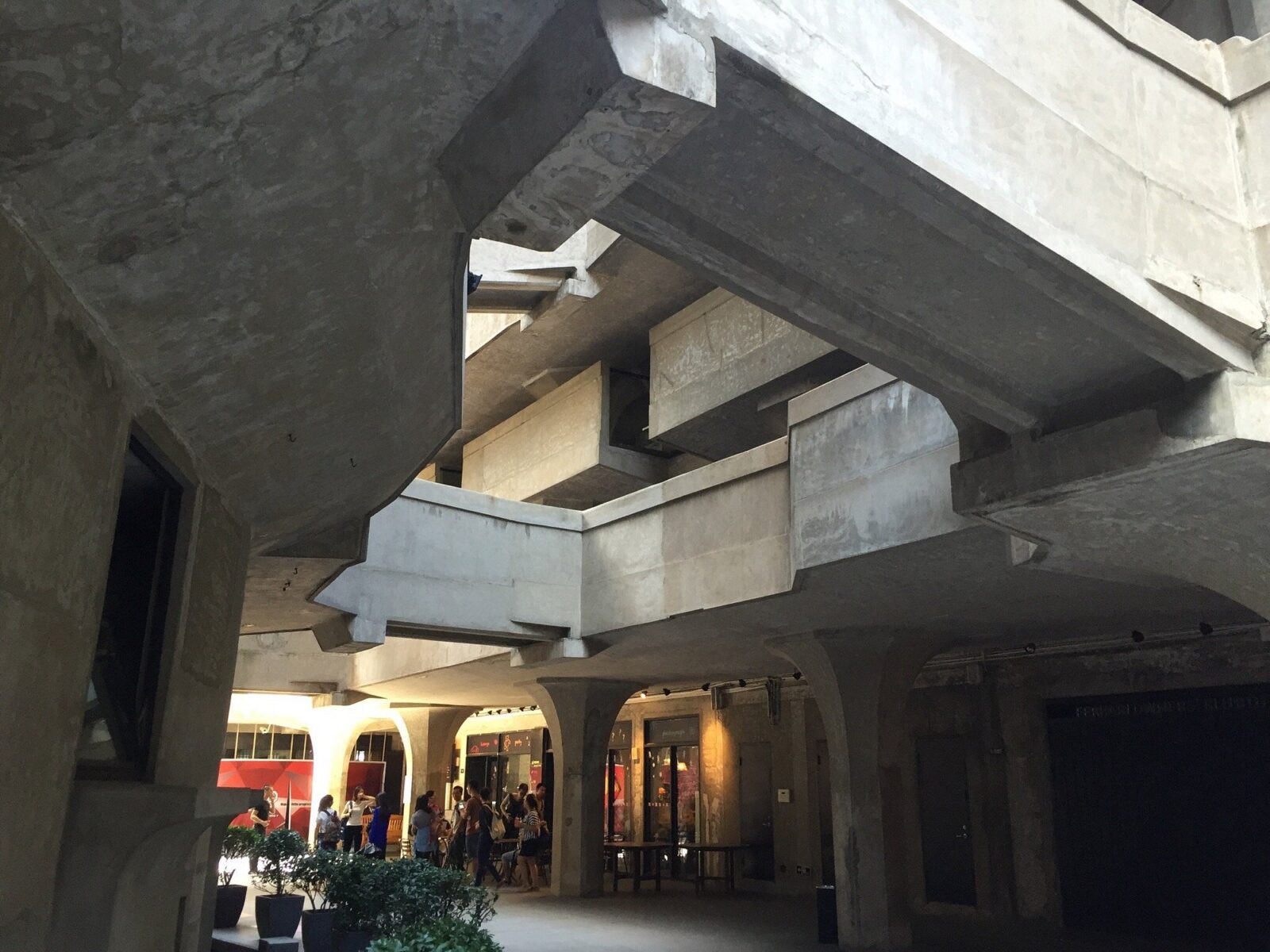
1933 old millfun
Rooftop Cafés & Secret Alley Walls
Swipe on Xiaohongshu and one will see that locals particularly relish sharing rooftops to alley corners that rarely appear in guidebooks. A popular one includes a cafe near West Nanjing Road with a discreet staircase that leads to an open rooftop. The drinks are overpriced (and suboptimal; a latte is about ¥45), but the view of the skyline, especially as it fades into golden hour, makes you understand why it’s tagged under instagrammable Shanghai.
Alley walls are another treasure. While in Jing’an, I stumbled onto a narrow lane dominated by dozens of cartoon dumplings painted on the wall — then posted dozens of times under hashtags like “上海拍照点”. A student told me it switches up every few months — which would keep photographers returning. These spots aren’t slick, but that’s the bonus: you get raw texture, peeling paint, scooters half-obscuring your shot.
For those in pursuit of street photography Shanghai, the Xiaohongshu tips took you off the well-beaten tour path. It is about blending in, pretending you’re just another passerby, and catching those fleeting street layers. The best hidden Shanghai photo spots aren’t even on Google Maps sometimes — they’re passed around deep in a labyrinth of apps, waiting for you to stumble upon them.
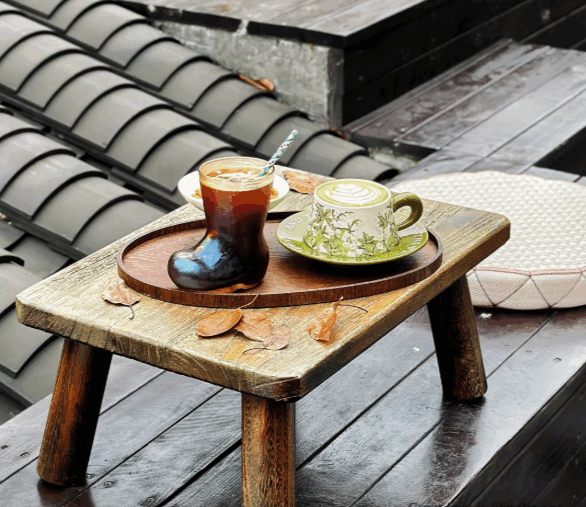
Rooftop Cafés
Night Lights & Reflections in Shanghai
Oriental Pearl Tower Illumination: Shanghai Night Photo Spots
The light up of the Oriental Pearl Tower at night is almost dramatic. I got there around 7:30 PM, when the tower changed to electric blues. Tourists hovered through the promenade, and some were in trouble with the tripods, others with the phones in their hands. The chill air of Huangpu River had the slight scent of roasted chestnuts and river water, and somewhere in the vicinity a street performer was playing a saxophone.
It is one of the classic Shanghai night photographing spots, and photography of Shanghai is about exposure, with bright tower lights or dark riverbanks. I even found myself cowering behind a low wall for reflections, and suddenly the crowd had dissolved, leaving only color and movement in my frame. Ctrip prices observation-deck tickets around ¥160–200, which is fair, although to shoot at night, you need not ascend, as riverbanks are wide as lenses
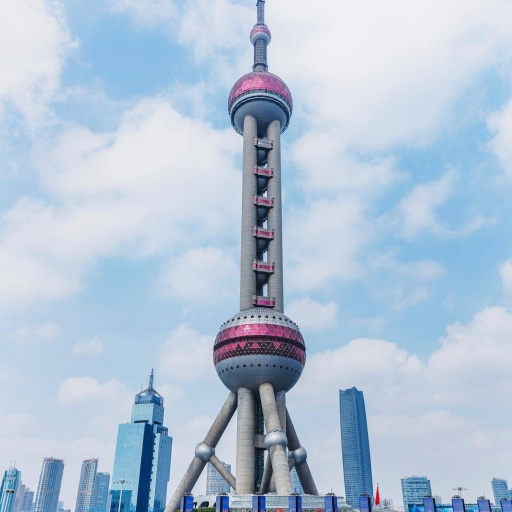
The Oriental Pearl Tower
Waibaidu Bridge & Suzhou Creek Reflections: Hidden Night Frames
Just a 10-minute walk from the Bund, Waibaidu Bridge offers an entirely different perspective. I remember the metal trusses glowing orange under floodlights, and the creek reflecting neon signs from nearby shops. Now and then, delivery bikes whizzed by, headlights painting streaks like water across the surfaces. In terms of Shanghai night photo spots these reflections translate into something that is more of a painting and less of a photograph.
It’s also quieter than the Bund, giving a little extra time for experimental shots. I propped my little camera on a railing and took long exposures of the water as the city hummed behind me. For photo spots lovers in Shanghai who adore mood night scenes, this spot takes some patience.
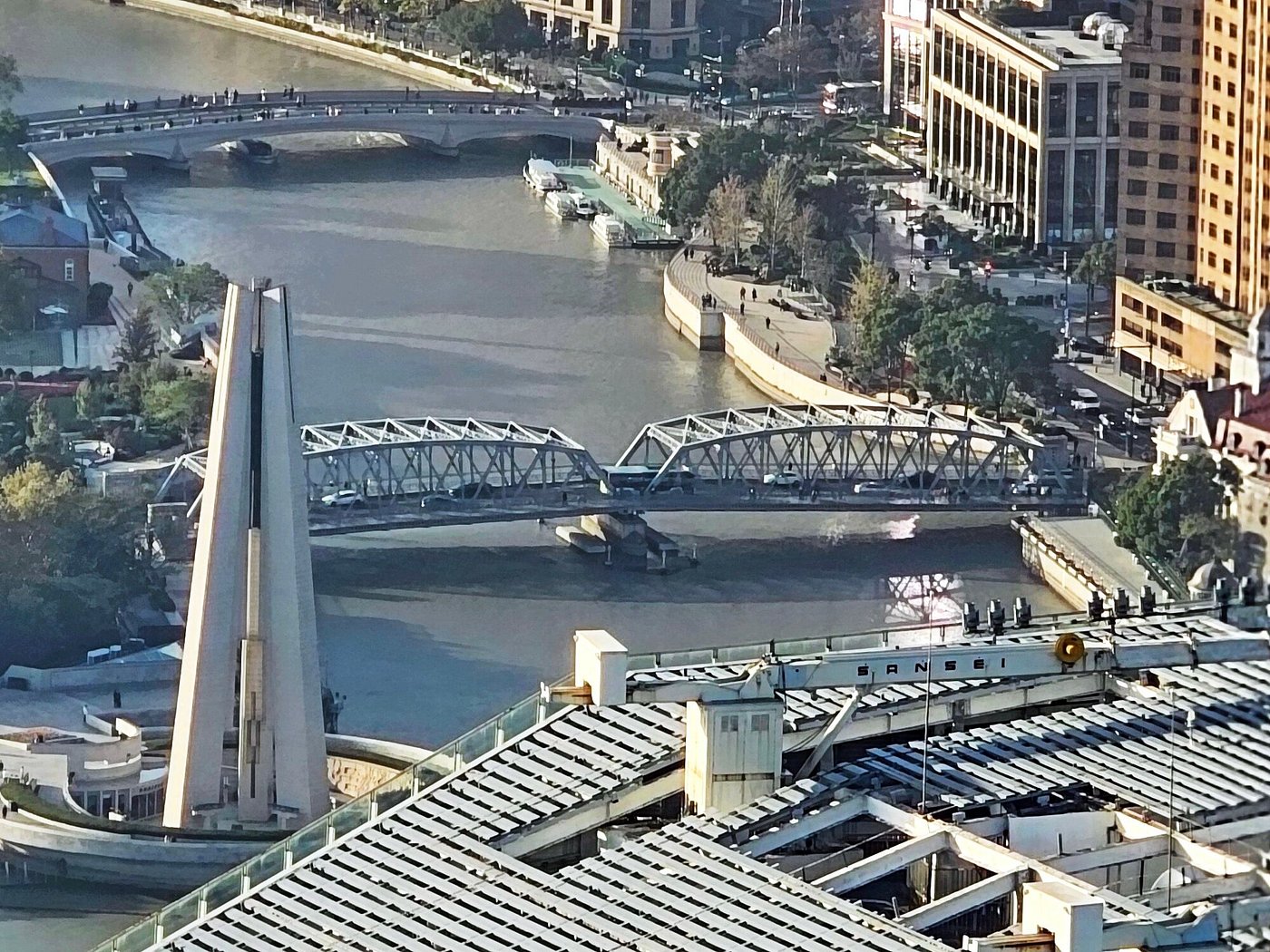
waibaidu bridge
Nanjing Road Neon Glow: Shanghai Photography in Motion
Nanjing Road transforms after sunset. Signs are so bright and large on store fronts, LED signs that crawl the latest information or giant video screens battle each other for eyeballs. I once attempted a street portrait here: A couple stopped beneath the glare of a sign for dumplings, taxis whizzing by in dynamic streaks of light. This is shabby, gothic-modern Shanghai and one of the best places for night photography of Shanghai.
Tips: don’t go in the weekend if you are after unobstructed shots – central area is pedestrian only on weekends. Instead, look in the side alleys or on higher floors of department stores. For Shanghai photography in general this is really about embracing motion — the blur, the neon and the random human interactions make shots you can’t plan for. Skip Nanjing Road at night and you miss the side of the city that’s pure electricity.
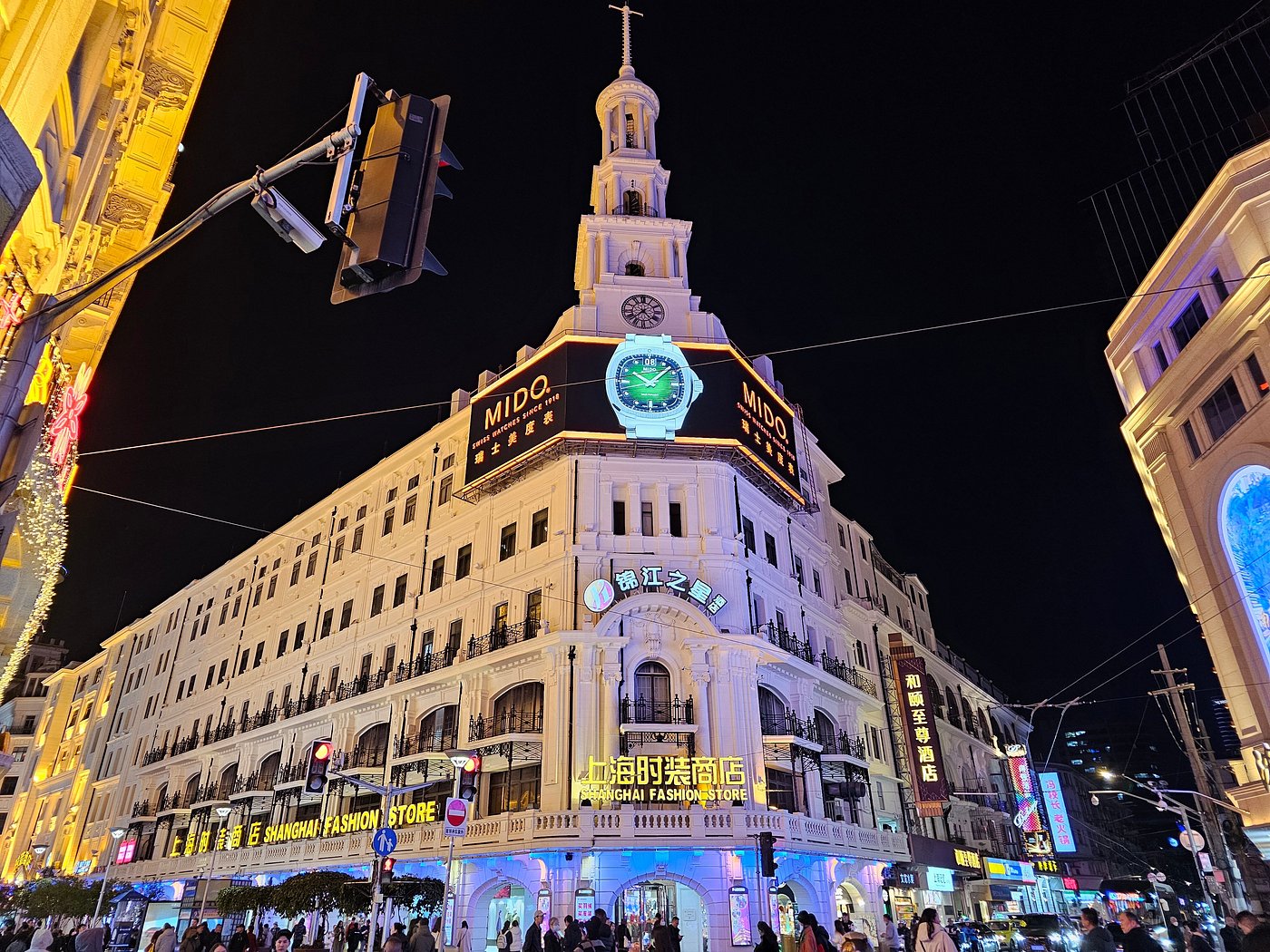
nanjing road
Practical Tips for Capturing the Best Shanghai Photo Spots
Best Times of Day for Shanghai Photography: Sunrise, Sunset, and Night
The timing of a shot can be the difference for success or mediocrity in Shanghai. I made it to the Bund before dawn once — mist clinging to the river, people running up and down all around me, first ferry’s horn sounding distantly. With that soft, golden light, even the most photographed skyline becomes something personal. Sunset is another good time, particularly around the French Concession and at rooftop cafés where shadows creep over tree-lined streets.
But there is an allure to the night, as well. No one can match the neon reflections of Nanjing Road or Waibaidu Bridge. For Shanghai photography tricks, preparation is everything: check the weather forecast, target weekdays if possible, and keep an extra 15–20 minutes for angles. Such fleeting moments often make the difference between casual snapshots and something even a skilled Shanghai photographer would envy.
Gear Tips: Smartphone vs DSLR vs Drone
Shanghai is versatile depending on your gears. A smartphone actually does a surprisingly good job for instagrammable Shanghai spots like Tianzifang or alley murals when you need a quick, discreet and easy setup to street photography. With a dslr you have more control, in particular for skyline exposures or river reflections at night. I had a tripod — essential for long exposures you’ll want to take capturing the Huangpu River — and I’m glad I did.
Drones? They are alluring, but the rules are strict. It is illegal to fly close to skyscrapers or tourist-heavy areas, yet certain hot spots like the Bund are heavily patrolled. It’s usually enough, if you persist, to stick to private rooftops where the owners don’t mind; otherwise, those photos may soon include unexpected fines. Knowing these rules is crucial to ensure great Shanghai photo spots coverage – stress free.
FAQ about Shanghai Photo Spots
Q: What are the best Shanghai photo spots for first-time visitors?
Ones you gotta see for the first time are the Bund, Lujiazui skyline and Nanjing Road. The Bund serves up old-school riverside panoramas; Lujiazui’s skyscrapers provide drama on the vertical plane. Nanjing Road glows at night for lively light lettering shots. For the culturally inclined, the French Concession and Yu Garden alleys are optional extras. The combination of landmarks and street details makes for a more complete story. These top Shanghai photo spots are the places that newcomers can get iconic yet authentic shot!
Q: Can you fly drones at Shanghai photo spots?
Many central areas in Shanghai are not open for drones to patrol. Downtown skyscrapers, the Bund and most tourist sites are off limits to drones. They may be permitted upon some private rooftops or outskirts with owner permission. Regulations can risk fines if broken. For Shanghai photography, try alternatives such as tall observation decks or handheld gimbals. Sure, drones are tempting, but safety and legal compliance matter more than that aerial shot.
Q: What are the best Shanghai instagram spots for couples?
Couples typically opt for the Bund as the sun sets, tree-lined streets of the French Concession and alley murals in Tianzifang. Rooftop cafes, small bridges and other places are also intimate boxes to photograph. The time of day makes a big difference: early mornings cut down on crowds, while golden hour ups the colors. Such places are tagged everywhere on the Xiaohongshu app as Shanghai instagram spots that are both romantic and aesthetic.
Q: Is French Concession good for Shanghai street photography?
Absolutely. The French Concession Memphis streets have a warranty of tree-lined traffic and colonial tiled-scenes, as well vibrant local life. Scooters, cafés and small shops supply moments of the unexpected. I regularly see shadows, reflections and unguarded moments that transcend Shanghai street photography. Unlike the Bund and Lujiazui, this is an area that feels lived-in, with substance and context beyond landmarks.
Q: Can I hire a Shanghai photographer for a private shoot?
Yes, several Shanghai freelancers also cater for private sessions. Rates are ¥500–1500 per hour based on experience and location. They can lead you to off-the-beaten-path alleys, rooftop cafés or less-crowded landmarks and help you get the best shots. For availability I would plan ahead and book on social or local photography sites. It’s particularly valuable if you’re more into polished portraits or professional quality Shanghai photography.
Q: What are hidden Shanghai photo spots less known to tourists?
M50 Art District, 1933 Old Millfun, and secret alley murals in Jing’an make great hidden photo spots Shanghai. Rooftop cafés, little bridges and off-the-map lanes in the French Concession apply as well. These are the kinds of places you will find on Xiaohongshu, not in your usual guidebooks. They make for great creative Shanghai street photography because they have authentic textures, graffiti and urban details that bigger monuments can’t offer.
Q: When is the best time to photograph Shanghai?
Spring and autumn are preferred. In spring, blossoms explode in the parks and fresh greenery runs up the Bund. The fall is cool and the light golden, especially on tree-lined streets in the French Concession. Summers can be swampy and swarming; winters are cold but yield clear skies for shots of the skyline. Time of the year is a very important factor to deciding on your Shanghai photography, especially when shooting outdoors and in streets.
Q: Are there any restrictions on photography in Shanghai temples or museums?
Yes. Some temples and some museum sections ban the use of tripods, too. Signs will always be written in both languages but some have English translations, and others only Chinese. Obeying regulations is not only for security, it is also about cultural manners. That’s Shanghai photography, for which natural light and handheld cameras typically suffice. By abiding by limitations you’re able to shoot in a responsible manner, enjoying raw experiences as they unfold.

